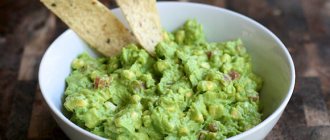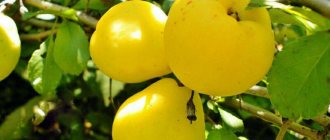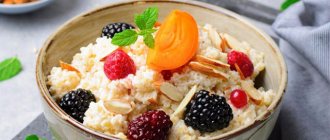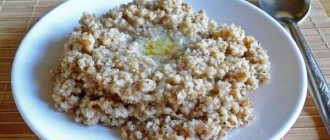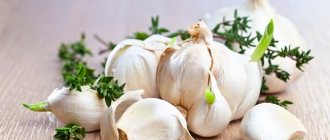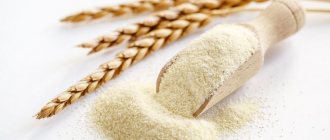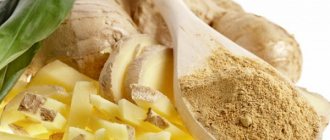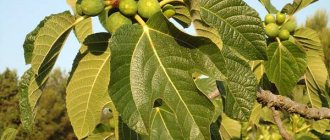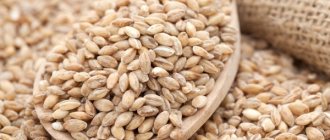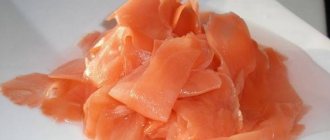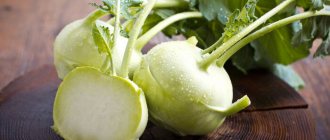Barley porridge is a valuable product with a rich composition of vitamins and minerals. Eating this dish is good for the health of people of all age groups. Women need to eat porridge to prevent the appearance of signs of aging, men - to build muscles, children - for the normal development of organs and systems.
Pregnant women should not consume this product, but nursing mothers will benefit from barley porridge: it helps eliminate signs of fatigue and has a beneficial effect on mood and well-being.
Calorie content
The number of calories in barley porridge is 76 kcal per 100 grams, provided that it is cooked in water. Nutritional value of the product (ratio of proteins, fats and carbohydrates): 2.3/0.3/15.7.
When adding a piece of butter, the nutritional value will rise to 114.5 kcal, and the BJU ratio will look like 3.4/1.3/21.8 g.
If the cereal is cooked with milk and butter, 100 grams will have 108.8 kcal, and the BZHU will be as follows: 2.7/4.2/14.9 g. Without adding butter, a dish with milk will have a calorie content of 111 kcal and contain 3.6 g protein, 2.0 g fat, 19.8 g carbohydrates.
The calorie content of barley cereal per 100 grams is 324 kcal, nutritional value (BJU) - 10.4/1.3/66.3 g.
Product Features
Barley porridge (health benefits and harms are presented in the article for informational purposes) is made from barley, which is a cultivated grain cultivated in ancient Syria for more than 10,000 years.
Thanks to archaeological excavations that were carried out in Egypt and the Middle East, it was proven that the plant was cultivated by ancient people. Since many peoples were familiar with the culture, it had a wide distribution area. Barley was mainly used to make beer malt. On rare occasions it was used to prepare baked goods.
Grain appeared on the territory of Rus' from Siberia, the countries of Asia and the Caucasus at the end of the 10th century. It had good resistance to various weather conditions, nutritional and biophysical properties, and therefore became widely popular in the northern regions and mountainous areas. It was consumed by people who also used it as feed for poultry and livestock.
Description
To make porridge, barley groats are used, presented in the form of grains of different parameters and shapes . They are created from unpolished crushed barley grains.
Initially, after collecting grain, sorting occurs, during which weed seeds, small and deformed grains are removed. Afterwards, the cereal is freed from coarse husks, flower films and mineral impurities. At the end, the grain is evenly crushed.
Not only barley, but also pearl barley is made from barley. However, the latter is polished, so it contains very few nutrients. Barley porridge, unlike pearl barley, contains much more fiber and is also characterized by a more delicate taste.
Compound
Barley porridge is characterized by a very high nutritional value, as well as the property of long-lasting satiety. The dish can give the body energy for up to 4 hours. It also contains a lot of fiber, approximately 1.4%.
The benefits of barley porridge are due to its chemical composition, which contains:
- vitamins of group B, E and PP;
- iron;
- potassium;
- calcium;
- magnesium;
- manganese;
- copper;
- phosphorus;
- zinc.
Due to the fact that the porridge contains vitamin E, which is involved in many processes that occur inside the body, when consuming the dish, vision improves and biochemical processes are normalized. Using the product helps get rid of insomnia, normalize the activity of the nervous system, and improve brain function. This is ensured by the fact that the porridge contains B vitamins.
The product helps get rid of dermatitis and improve blood circulation due to the presence of vitamin PP. Due to the fact that the cereal contains hordecin, it is characterized by an antibacterial effect and allows you to get rid of fungal infections.
The protein present in barley groats is a natural source of amino acids, which help increase muscle mass, as well as prevent the risk of developing viral pathologies.
BJU, calorie content
Barley porridge (health benefits and harms are determined by the chemical composition of the cereal) after heat treatment will have the following energy value per 100 g of dish:
- with milk with the addition of 10 g of butter and sugar – 212 kcal;
- with milk with the addition of 8 g of sugar – 151 kcal;
- with milk with an average fat content - 111 kcal;
- boiled in water – 76 kcal.
The nutritional value of raw barley groats reaches approximately 322 kcal per 100 g of product.
The ratio of BJU per 100 g of product has the following proportions:
- proteins – 10.4 g;
- fats – 1.3 g;
- carbohydrates 66.3 g.
Compound
Barley groats are made from cereal grains called barley. Yachka contains many complex carbohydrates that are slowly digested. The finished dish contains about 10% protein and 6% fiber, which allows you to cleanse the intestines and stomach of toxins and waste. Thus, when porridge is consumed, the breakdown products of harmful substances are removed from the body.
List of vitamins contained in the product:
- thiamine;
- folic acid;
- ergocalciferol;
- tocopherol;
- niacin.
The cell has a rich chemical composition, which contains the following minerals:
- zinc;
- calcium;
- copper;
- chromium;
- iron;
- magnesium;
- manganese;
- silicon;
- sulfur;
- sodium;
- fluorine;
- cobalt;
- phosphorus;
- potassium;
- boron;
- molybdenum.
The above beneficial substances in barley porridge prevent the accumulation and deposition of fats. If you do not wash the cereal white during the cooking process, the remaining gluten will have a beneficial effect on the mucous membrane of the stomach walls.
Chemical composition of barley groats
Barley groats, made from purified barley grains, are a valuable source of nutrients necessary for the normal functioning of our body.
- The energy value of the product is within 324 Kcal for every 100 g. 100 grams of the product contain:
- Proteins are the fundamental material for the construction of tissues and organs of our body. Complex carbohydrates and vegetable fats contribute to the release of large amounts of energy necessary for vital processes.
- Barley does not contain cholesterol, which has a beneficial effect on the functioning of the heart and blood vessels.
In addition, the cell is rich in:
- vitamins B1, B6, B9, PP, E and D;
- minerals: potassium, sodium, phosphorus, iron, magnesium, etc.;
- dietary fiber;
- fiber.
Vitamins and minerals improve the performance of various systems in our body. They are especially necessary for the functioning of the nervous, circulatory, endocrine, and cardiovascular systems.
These substances help improve immunity and also affect the health of skin and connective tissue, mucous membranes.
Fiber and dietary fiber help improve intestinal motility. Thanks to them, harmful substances are removed from our body.
Thanks to such a rich chemical composition, barley has a beneficial effect on our health. But the advantages of the cell do not end there. An undoubted advantage is the low calorie content of dishes prepared from this product.
Read: Black currant leaves: beneficial properties for adults and children
The energy value of 100 g of porridge cooked from a cellar in water is in the range of 74-100 Kcal. The nutritional value of barley porridge with milk is about 116 Kcal. Therefore, this dish can be safely included in your diet if you want to lose extra pounds.
Beneficial features
Barley porridge is an extremely useful product due to its antispasmodic, diuretic and antioxidant properties. Barley prevents the development of cancer.
The product is recommended for use by people with the following diseases:
- peptic ulcer of the stomach and duodenum;
- kidney diseases;
- hypertension;
- digestive disorders (diarrhea);
- problems of the hematopoietic system;
- thyroid pathologies;
- vascular diseases.
For women
Barley porridge contains the amino acid lysine, which stimulates the production of collagen, which has a beneficial effect on the skin and prevents the appearance of wrinkles. The balanced composition of the dish is beneficial for nails and hair.
The product is useful for breastfeeding women: it restores strength, eliminates insomnia and improves mood, helping to cope with postpartum depression.
For men
Barley porridge is especially useful for men involved in sports: the product helps build muscles. The protein contained in porridge is quickly absorbed and strengthens bones.
Eating the dish has a beneficial effect on men's health: barley porridge restores the normal functioning of the genitourinary system.
For children
Barley porridge is suitable for baby food. The dish is allowed to be given to children from 1.5 years old.
Benefits of barley for children:
- strengthens vision;
- promotes bone and brain development;
- improves digestion;
- Due to the lysine content, it protects against infections and viruses.
For those losing weight
The popularity of a diet based on boiled barley is due to the fact that the digestive system easily absorbs this product. The finished dish contains a minimal percentage of fat, which allows it to be used for dietary purposes. People suffering from obesity can eat porridge.
Benefits of the product for weight loss:
- prevents you from gaining excess weight;
- relieves hunger;
- reduces the risk of eating disorders during a diet.
As a result, it becomes easier for a person to tolerate food restrictions. It is most beneficial to eat barley for breakfast.
You should not add the following components to the porridge:
- oil;
- meat;
- sour cream;
- sugar;
- salt.
To add flavor, you can add:
- honey;
- dried seaweed;
- nuts;
- dried fruits;
- fresh herbs;
- fruits;
- vegetables;
- vegetable oil.
It is necessary to eat fractionally, in small portions. The advantage of barley porridge is that it is quite filling and eliminates the feeling of hunger for several hours. If a person is still hungry, nutritionists advise eating 2-3 tablespoons of warm porridge.
Use in folk medicine
For many centuries, barley and porridges made from it were basic products in Rus'. And of course, in those distant times, people noticed that eating cereal dishes improved their health. Traditional healers have developed many medicinal recipes based on yachka.
A decoction of cereals is popularly known as a diuretic and anti-inflammatory agent. It was used for constipation, arthritis, obesity, breast diseases, hemorrhoids and diabetes. Even today, herbalists advise drinking barley decoction for severe coughs and to prevent urolithiasis. Prepare the remedy from 1 tablespoon of porridge and a glass of water. Boil for a quarter of an hour and then leave for 5 hours.
The cereal, cooked until half cooked, was still hot, wrapped in a piece of cloth and applied to the chest. In this way, our great-grandmothers treated coughs in children and adults. The same compresses were applied to the inflamed joints.
Recipe for porridge in a slow cooker
A healthy dish can be prepared in a slow cooker.
Required ingredients:
- barley - 1 multi-cup (120 g).
- water - 3 multi-glasses.
Recipe for making dietary barley porridge:
- Rinse the cereal 1-2 times.
- Transfer to a slow cooker.
- Fill with clean water.
- Close the lid and cook in the “Grains” mode for 20 minutes.
- After this time, turn on “Heating” for 15 minutes.
You can check the readiness of the dish by its appearance: the cereal should not be crumbly. Otherwise, the egg will take longer to be digested by the body.
Benefits for weight loss
As already mentioned, barley porridge is useful for weight loss. It can be consumed as a main dish without making significant changes to your usual diet. Or you can resort to more radical weight loss by excluding from the menu for a week everything except egg, kefir, fruits, vegetables (non-starchy), freshly squeezed juices and tea. You can make dietary soups from vegetables, but do not overuse salt and spices. But the yachka should be prepared according to a special recipe - without oil, salt and other spices. Pour 500 g of barley into 900 ml of boiling water and cook until thick. Then wrap it in a terry towel and leave it warm for 40 minutes. The second option for preparing porridge for a diet is using a thermos. In this case, raw cereals and boiling water are taken in a 1:2 ratio and left overnight.
The weekly diet menu is made up of a list of allowed foods. Here is an example of nutrition for one day: kefir, banana and porridge, to which you can add a little honey, are suitable for breakfast. For lunch, it would be nice to prepare a salad of fresh vegetables seasoned with a little olive oil or lemon juice. In addition, the lunch menu includes a portion of porridge and vegetarian soup. A green apple or orange is suitable as a snack, and for dinner - a egg with low-fat kefir.
This is a very satisfying diet, so it is quite easy to tolerate. Meanwhile, the result is impressive. If you are overweight, you can lose up to 4 kilograms in a week of eating this way.
Harm and possible contraindications
If consumed incorrectly, porridge can cause harm to the body, manifested in the form of:
- Excess protein. Nutritionists do not recommend combining the consumption of porridge and egg whites.
- Digestive stress. It is possible with congenital abnormalities in the gastrointestinal tract and a lack of enzymes for protein breakdown.
- Weight gain. It is not recommended to overuse cereals; it is enough to eat them several times a week.
Barley porridge should not be eaten during pregnancy; it is better to eat it after the baby is born. Eating this dish helps relieve spasms and rids the body of excess fluid, which can cause premature birth.
It is forbidden to eat the dish if there is severe inflammation of the stomach and intestines and if there is an individual intolerance to the product.
